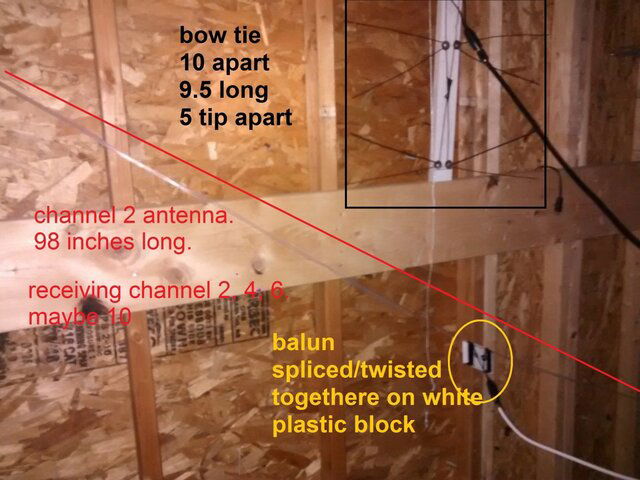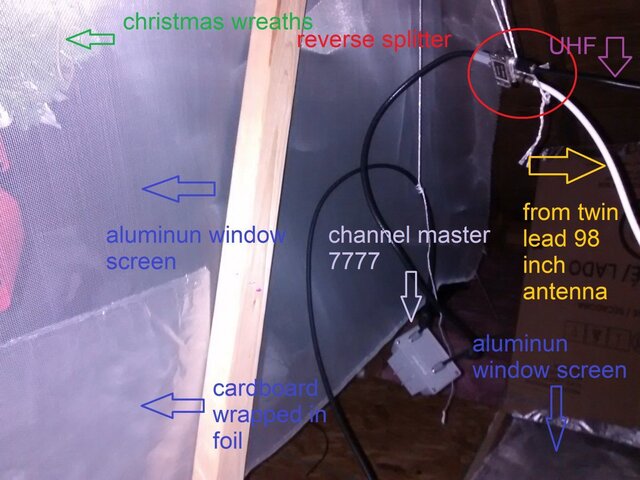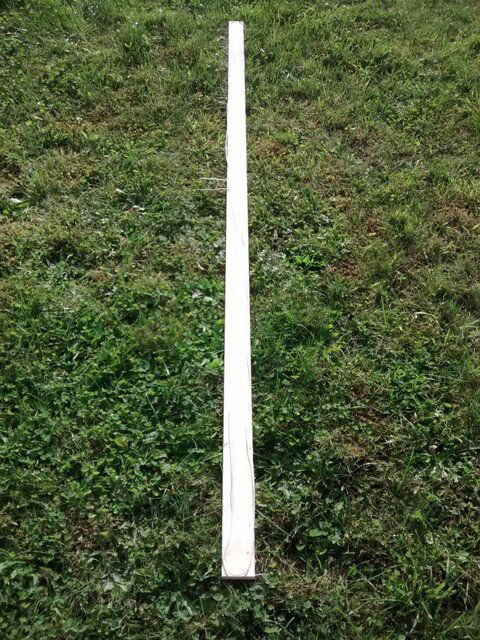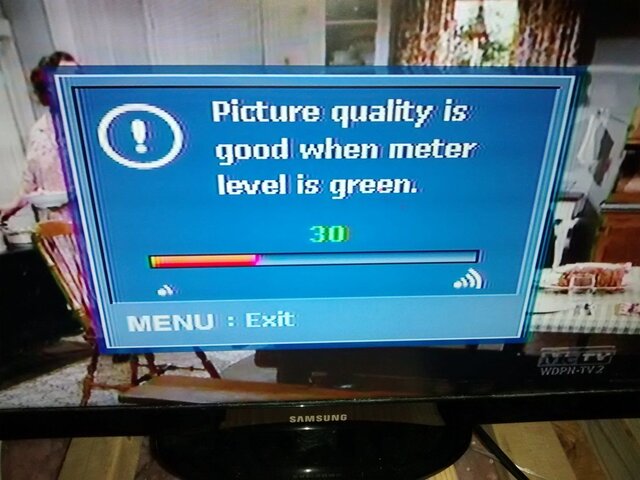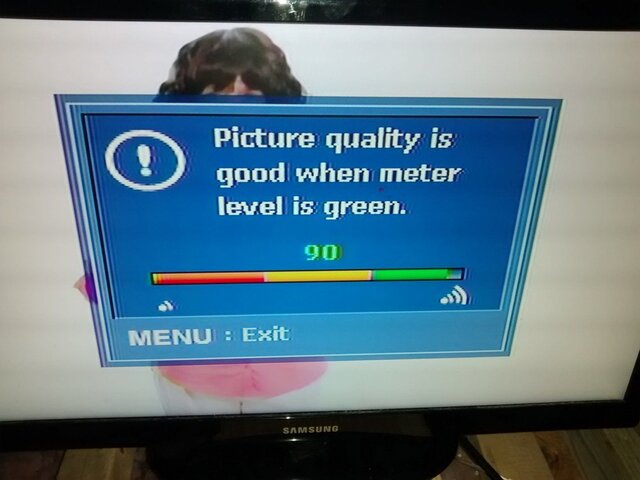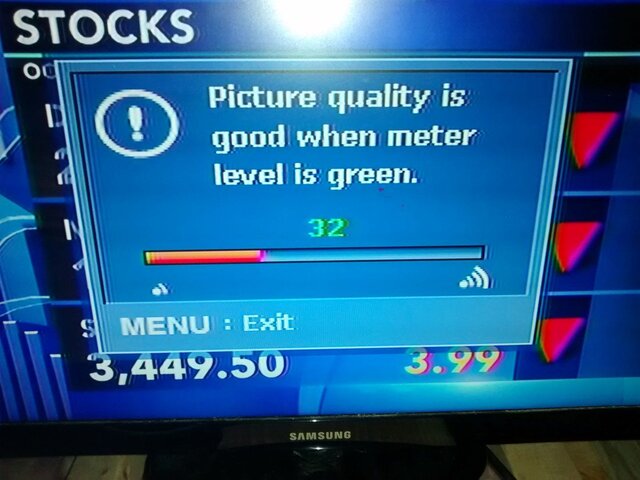Thank you for the interesting antenna photos with notations.
View attachment 147584
View attachment 147585
View attachment 147586
I see you are using a splitter in reverse to combine your VHF-Low twinlead antenna with your 4-bay bowtie antenna.
Sometimes that works OK, but not always. The correct device to use is a HLSJ (VHF-High/VHF-Low Separator-Joiner).
If the two antennas pick up the same signal, when they reach the combiner they might interfere with each other.
To see if using a splitter in reverse as a combiner for your two antennas is working OK, I suggest you make a TEMPORARY test by connecting just the VHF-Low twinlead antenna to the 7777 preamp to see if there is any improvement in your VHF-Low signals.
